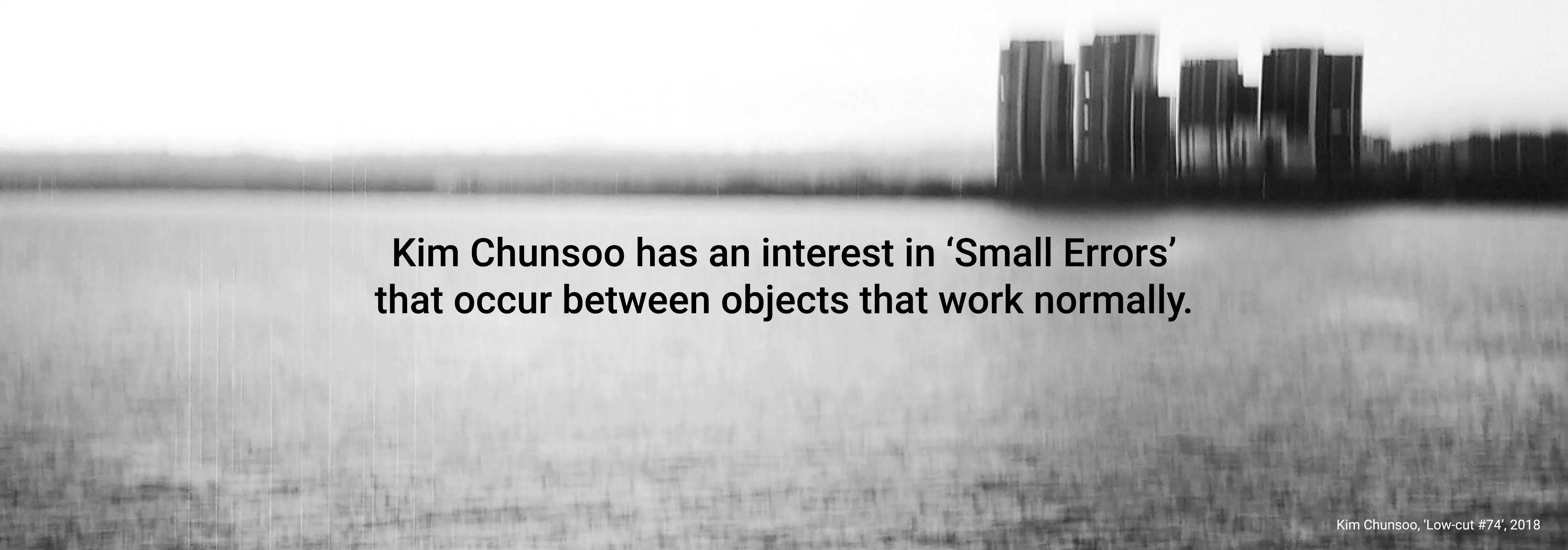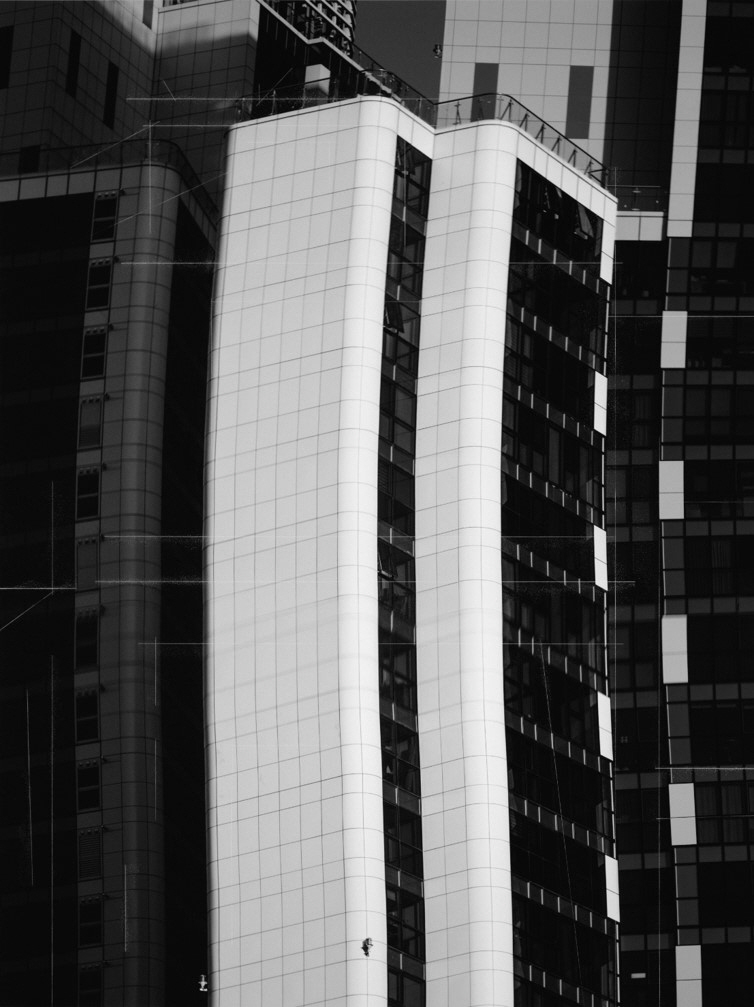Artist_Art Focus
Three Artists Who Read the World Anew through Photography: Kim Shinwook, Kim Chun Soo, and Jung Jihyun
May 23, 2022
A Team
 Kim Shinwook, Kim Chun Soo, Jung Jihyun
Kim Shinwook, Kim Chun Soo, Jung Jihyun
Photography has become an important art form in contemporary art and has allowed artists to embody ideas and feelings that are otherwise difficult to express in other art forms.
With the medium’s fast-changing technology, many contemporary Korean photographers use this genre to put traditional subjects into new contexts and compositions. Kim Shinwook, Kim Chun Soo, and Jung Jihyun are three of the many artists who create unique images through photography to read our contemporary world anew.

Artist Kim Shinwook. Courtesy of the Artist.
Kim Shinwook (b.1982)
Kim Shinwook’s main interest does not lie in capturing the subjects themselves when taking pictures for his artwork. He focuses instead on the peripheries and unravels these surrounding stories from an ethnographic or cultural perspective. In order to capture these narratives in his photography, Kim also conducts interviews and research to learn about the people, the landscape, history, and legends that exist within these boundaries. Thus, Kim’s artworks often accompany different kinds of archival materials.
Kim’s works are deeply related to his personal experiences and interests. His previous works were about the marginalized stories surrounding the Heathrow Airport in London. While he was studying in the city and providing airport pick-up services for a living, Kim focused on the changing landscape, the lives of people, and the judicial system caused by the existence of the airport. Also, in relation to his family—his grandparents were originally from North Korea—Kim also studied the life of a North Korean defector living in London, or the border area between North and South Korea. Through Kim’s works that talk about the perimeters and boundaries, viewers are able to encounter new perspectives and stimulate imaginations.

Exhibition view of the 7th Amado Photography Award, Kim Shinwook Solo Exhibition "In Search of Nessie" at Amado Artspace/Lab, Seoul. November 20 - December 20, 2020. ⓒ Artist/ Amado Artspace/Lab.
Kim Shinwook received the 2013 British Institution Awards from the Royal Academy of Art (UK), the 2018 ManifestO Recontres Photographiques de Toulouse (France), the 7th Amado Photography Award (Korea), and the 2022 IL WOO Photograph Award (Korea). His works are in the permanent collection at the Kiyosato Museum of Photographic Arts (Japan), the GoEun Museum of Photography (Korea), Oriel College, the University of Oxford (UK), Seoul City Hall (Korea), and many others.

Artist Kim Chun Soo. Courtesy of the Artist.
Kim Chun Soo (b.1981)
Kim Chun Soo is interested in the problems in our society where digital technology rapidly develops. As a medium that captures the likeness to reality, photography inevitably captures the imperfect sides of our world, where numerous terrorisms, conflicts, and discriminations happen. Although technology is rapidly advancing, there are still malformations occurring in photography. Likewise, our society seems to develop continuously but still contains incompleteness. These inherent errors in photography and our society are similar to the artist. Thus he attempts to reveal this connection through the medium.
Kim visualizes distortion and noise in his works to reproduce the vulnerability of modern society. During his study in the UK, Kim has observed various social problems surrounding the multicultural nation. He captured and recorded places where social incidents occurred, such as where terrorist attacks took place. He distorts the image and sometimes adds texts related to the incident. These errors and distractions in the picture often look like visual damage but also a new type of visual element, which reveals the ambivalence of both photography and our society. In his works, Kim keeps the structure very simple but adds many layers of stories to his photography, such as leaving clues in the texts used in the artwork or the titles of the exhibitions.

Exhibition view of "Kim Chun Soo: Low-cut, Low-pass" at Ilwoo Space, Seoul. August 30 - October 2, 2018. ⓒ Artist/ Ilwoo Foundation.
Kim Chun Soo had solo exhibitions at Space 22 in 2019 (Korea), Ilwoo Space in 2018 (Korea), the Insa Art Center in 2009 (Korea), and Space Baba in 2007 (Korea). He had participated in numerous group exhibitions at SeMA Bunker in 2018 (Korea), Kuenstlerhaus Bethanien in 2012 (Germany) and many others. In 2018, he was awarded the 9th Ilwoo Photography Award in the exhibition category (Korea).

Artist Jung Jihyun. Courtesy of the Artist.
Jung Jihyun (b.1983)
Jung Jihyun documents changing urban environments. He is especially interested in taking pictures of construction sites in redevelopment areas where buildings are torn down or being constructed. Jung captures the process of the changes in the urban city and attempts to contain the hidden stories surrounding the buildings. To Jung, capturing these moments is both a way to preserve the history of a city as well as a way to carry out his artistic practices.
As an architectural photographer, Jung enters the construction or demolition sites of a redevelopment area where people are restricted from entering. Jung does not merely take photos of these places but intervenes by adding some changes to the buildings. In his Demolition Site series, for example, Jung paints the rooms of a soon-to-be-torn-down building in red to emphasize that those places were once a home to someone and are about to vanish from our lives. Jung also follows the traces of the fragments from the red walls when the site begins to get deconstructed.

Exhibition view of Jihyun Jung Solo Exhibition, "RECONSTRUCTION SITE" at Gallery O’NewWall, Seoul. April 20, 2016 - May 10, 2016. © Arist/ Gallery O’NewWall.
Jung Jihyun held solo exhibitions at SongEun Art Cube in 2013 (Korea), KT&G Sangsangmadang in 2014 (Korea), Gallery O’NewWall in 2016 (Korea), and BMW Photo Space in 2015 (Korea). Jung received the 14th SAJINBIPYONG Award, Photo Space (Korea), and was a finalist for the 6th KT&G SKOPF in 2014 (Korea). He was also nominated for the Leica Oskar Barnak Award and Prix Pictet.
Articles
























